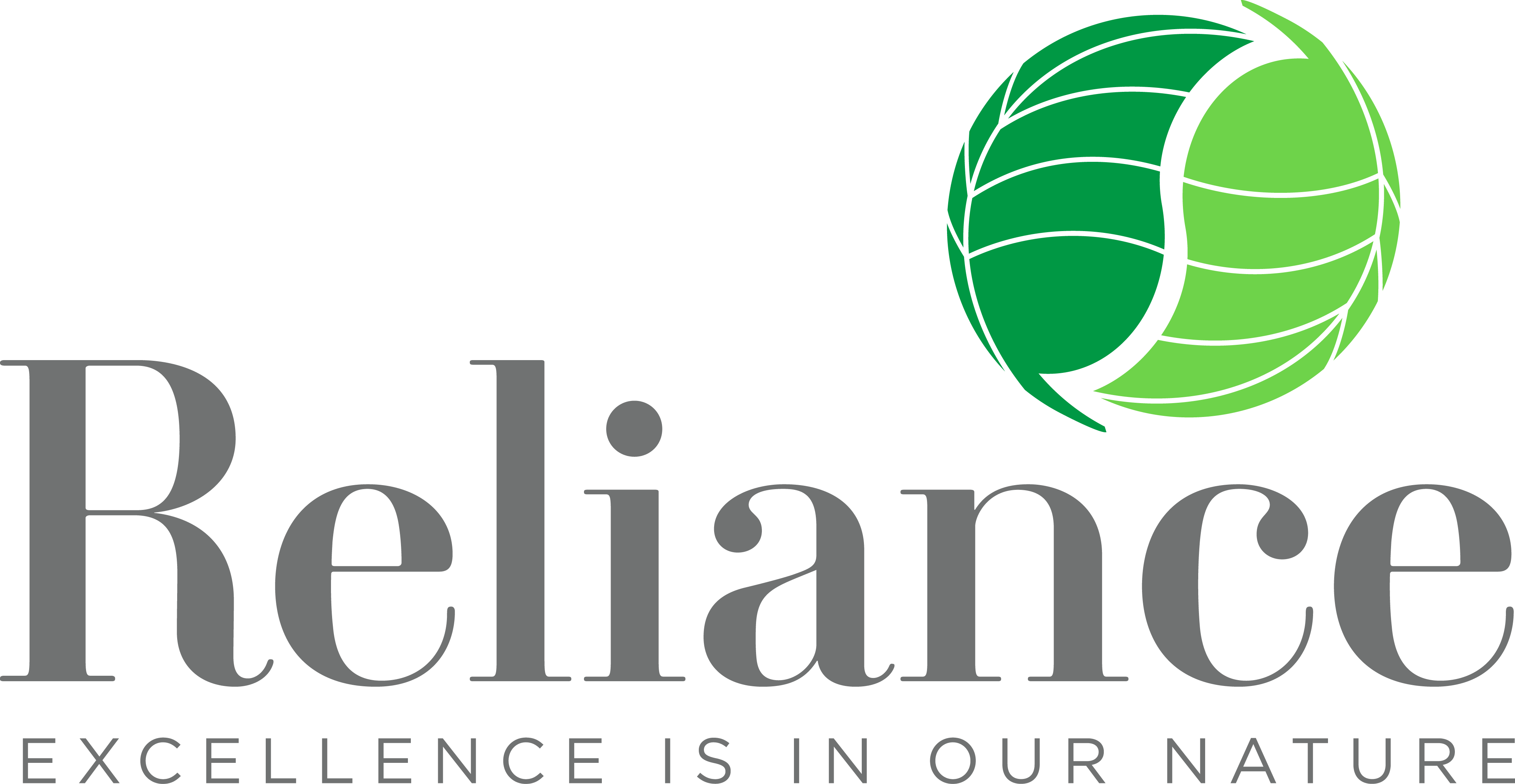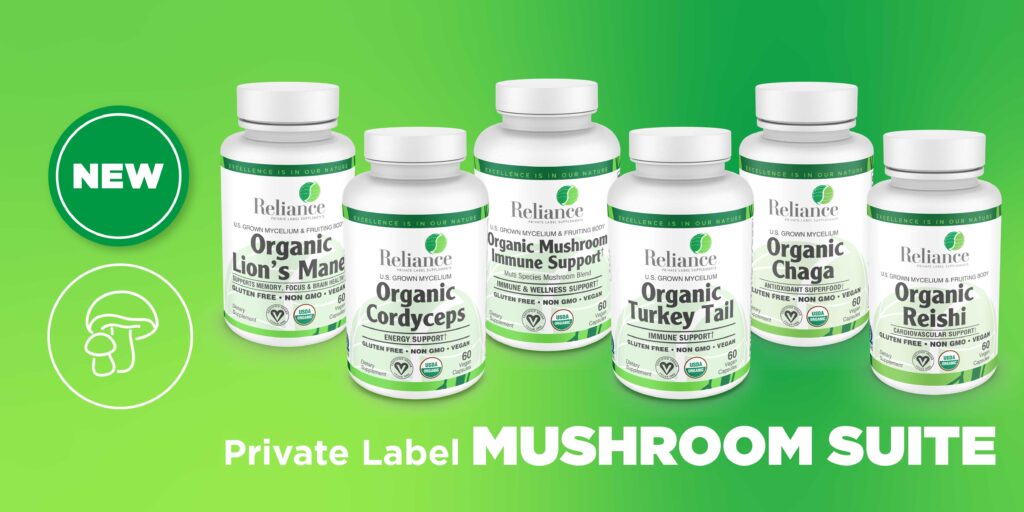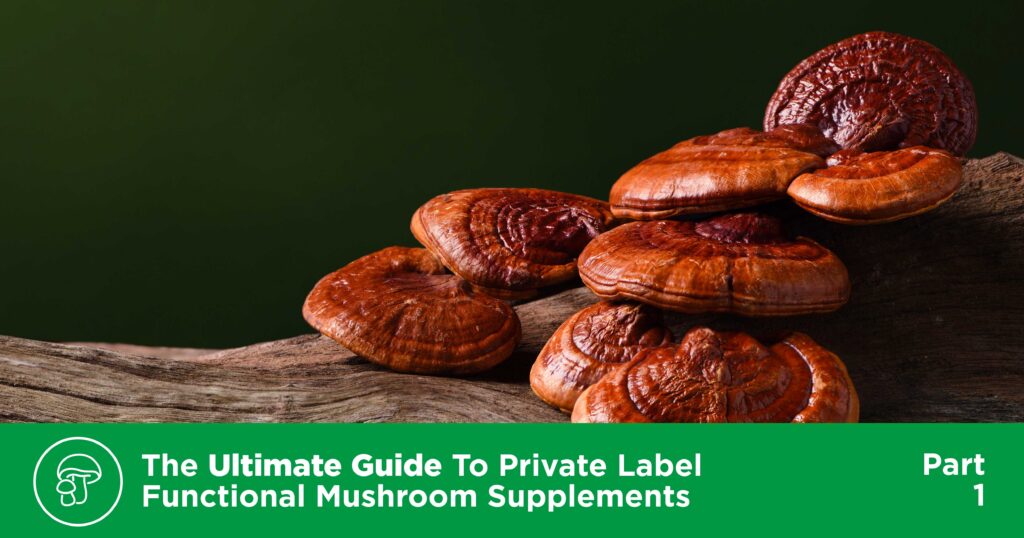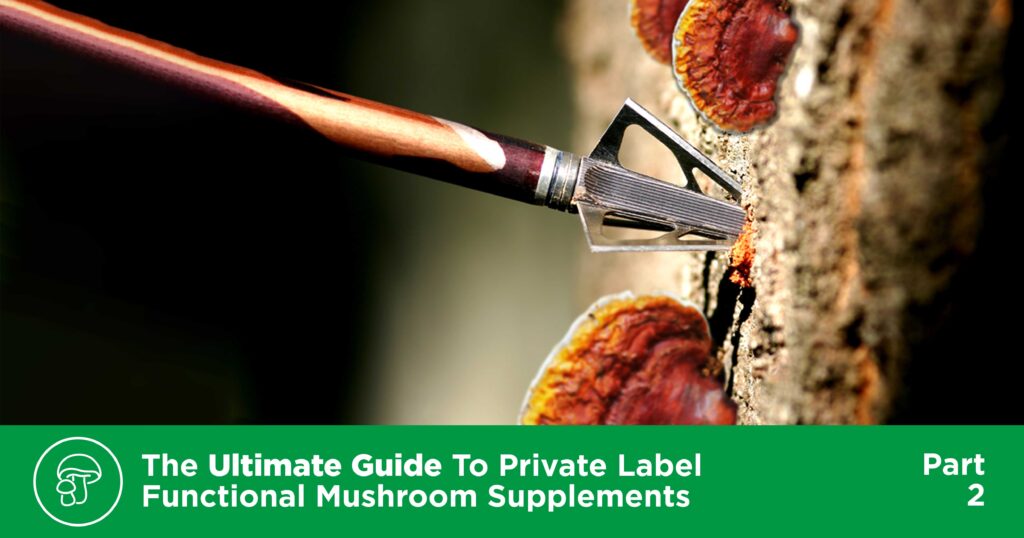This is part of our Ultimate Guide to Private Label Functional Mushroom Supplements, a complete overview of the health benefits of functional mushroom supplements, what makes them different from other types of supplements, why there is such consumer demand for them, and how they are made with transparent, high-quality manufacturing processes.
Manufacturing functional mushroom formulas is a tricky business, and there is a lot of disagreement and difference in the way these products are being produced. The following aspects of manufacturing a high-quality finished product are among the most important to consider when selecting a private label or contract manufacturing partner for your functional mushroom supplement.
How Are the Mushrooms Grown & Cultivated?

Sometimes cheekily called “fungiculture“, the differentiation between functional mushroom products starts right at the beginning of the process. Where and how the source mushrooms are grown can greatly influence the resulting product, so it is helpful to have the cultivation methods for functional mushroom sources created and/or overseen by a mycologist who understands the complex nature of these organisms.
All mushroom growing techniques require the correct combination of temperature, humidity, and a growth medium (or substrate) for the mycelium. Within these basic needs, however, there are many choices a private label functional mushroom manufacturer can make.
Are the Mushrooms Grown in the USA?
It is very important to consider the environment in which mushrooms are grown. This is generally true of every living plant we might eventually consume, of course, but is especially so with mushrooms. Mushrooms have both their fruiting body and their mycelium, which means that not only will they absorb whatever pollution might be in their surrounding air, they will also accumulate whatever nutrients – or toxins – are feeding their underground network. As not all countries have the same standard of regulating the growth medium for these organisms, there is a potential risk of these products carrying an unhealthy level of pesticides, pollution, or other environmental toxins.
What Medium Are the Mushrooms Grown In?
Another significant differentiator that takes place early in the process is deciding what medium will be used for the mushrooms to grow on. The mushroom mycelium produces enzymes that allow them to break down and absorb the nutrition contained in the substrate material they are growing on. This material essentially becomes a part of them, and therefore the mushroom fruiting body it produces. The most common growth medium manufacturers use is rice – generally brown rice, sometimes organic. There is some debate on how good this medium is, due to the potential for contaminants and heavy metals, but it seems to be preferred over less nutritious mediums such as corn, yeast, and even hay or sawdust. One less commonly used, but highly esteemed medium is oats – especially if they are organic. Oats are believed to be more nutritious and cleaner than most of the typical rice substrates being used, and as an added bonus, they are environmentally-friendly as an unirrigated crop, which means that they use lower amounts of water (than rice, for example) and don’t emit large amounts of greenhouse gases.
How Are the Mushrooms Processed?

The beneficial compounds located within the cell walls of the mushrooms are not always easily absorbed by the body, similar to certain plants we may consume that leave us with a lot of insoluble fiber we can’t digest. That is why mushrooms need to go through specific processes in order to be useful to us. Two processing methods that play a critical role in preserving the beneficial properties of the mushroom and mycelium are fermentation and dehydration.
Is the Mushroom Material Fermented?
Solid-state fermentation (SSF) is a fermentation mode that uses a non-soluble material that acts as both a solid support and a source of nutrients. SSF is thought to be the most suitable fermentation technique to cultivate mushrooms, offering a series of advantages such as higher yields, extended stability, lower production costs, lower protein breakdown, and lower risk of contamination, among others. Through SSF, enzymes naturally produced by the mushroom mycelia will digest, or ferment, the substrate, breaking it down in order to absorb the nutrition within it.
How Are the Mushrooms Dehydrated?
This is the necessary step of removing any water from the mushroom in order to make it into a powder (for encapsulation or use in a powdered formula). High heat can destroy many of the beneficial compounds in some mushrooms, so it is important to use low heat in order to preserve their nutritional integrity and density. The proper use of dehydration can prevent the growth of harmful microorganisms, prolong the shelf life, and improve the quality of the mushroom raw material.
How Is the Finished Product Formulated?

As mushrooms continue to pop up in new, exciting wellness categories, there are many differences among the finished products of various brands. Here are the main areas that can set a functional mushroom supplement ahead of the rest.
Does the Finished Product Provide an Efficacious Dose?
Depending upon the species of mushroom being taken, and the desired health benefit the consumer is looking for, there may be several different doses available on the market. An extremely large body of research has looked at the various benefits functional mushrooms can offer, how safe they are, and how few side effects they may present. The best known and most abundant bioactive compounds mushrooms have to offer are the alpha- and beta-glucans, so it can be helpful to know if/how many of these are contained within the formula.
Does the Formula Use the Mushroom Mycelium or Fruiting Body?
A quick perusal of available mushroom supplements will generally show that either “mycelium” or “fruiting body” – sometimes both – are listed on the product label. Although some manufacturers often choose one over the other, the truth is that both the mycelium and the fruiting body have a role to play in the life cycle of a mushroom, and they also provide their own unique health benefits. If either of these are not listed on the product label, it should probably prompt one to wonder where the beneficial mushroom properties are coming from.
Has the Product Been Formulated to Meet Any Standardizations?
Because the FDA (US Food and Drug Administration) doesn’t regulate dietary supplements as drugs, there is no guarantee of the product’s efficacy. Purchasing dietary supplements that provide some measure of standardization, however, may provide some assurance that the active compound is present in the specified amount. Standardization means that the amount of a specific compound (often referred to as a biomarker) is present in the finished product. Since factors such as the season a plant is harvested, the condition of the soil it is grown in, or how old the material is can affect their potency, natural products can vary from batch to batch. Standardizing every batch to a specific measure of potency provides a guarantee that the product will provide what is stated on the product label. In the case of functional mushrooms, much of their health benefits come from the polysaccharides they contain (including alpha- and beta-glucans), so it is ideal to standardize for the amount of polysaccharides present in the finished product.
Is Quality Control Present at Appropriate Stages Throughout the Process?
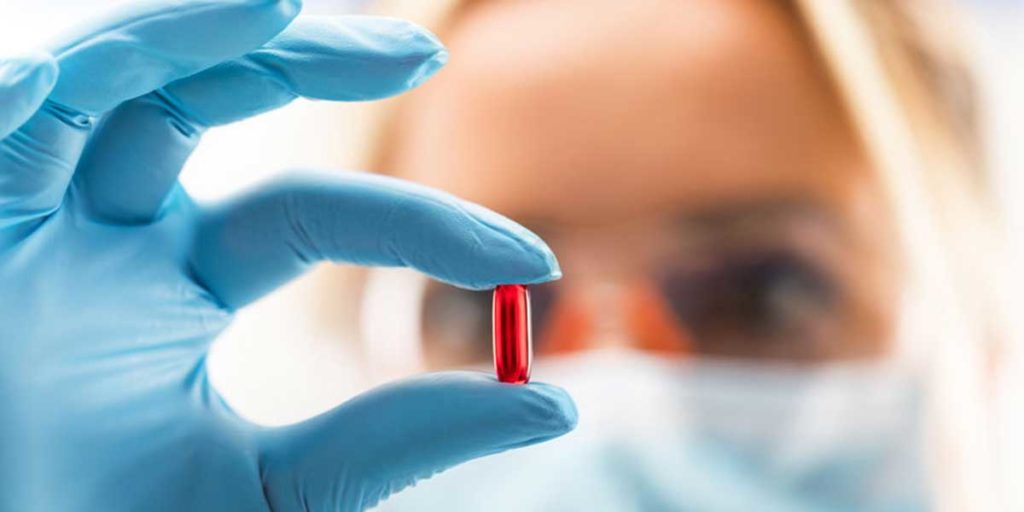
To ensure a viable, successful finished product is created, it is important to make sure that quality control (QC) is involved at critical stages of the process. From every batch of raw mushroom material through every filled functional mushroom capsule, they need to pass several rigorous quality control tests to ensure their purity, safety, and efficacy.
What Types of Testing Are Being Used?
It is important that, at each step of the manufacturing process, quality control measures are employed. Raw materials must be tested for contaminants, storage conditions monitored for temperature and humidity, and finished products tested again to verify their potency and purity. Because of their additional use of a growth medium (such as rice or oats), mushroom products especially need to be thoroughly tested for mold and other microbial content, heavy metals, and pesticides.
Is Third-Party Testing Included in the Process?
An extra step some manufacturers will take is to employ the services of a third-party lab for additional finished product testing. These impartial experts are an additional resource in making sure to verify the finished functional mushroom product species and identity and to confirm that the product was manufactured in consistent, compliant conditions.
What Is the Packaging for the Finished Product?
To some consumers, the packaging of a product is a small detail. When the products are more sophisticated, however, such as with probiotics or mushrooms, it is an opportunity for the manufacturer to further help the product stand apart from its competitors. The use of a post-consumer resin, or PCR, bottle, for example, presents a more environmentally-friendly, sustainable packaging option for organically grown mushroom products. Benefits such as reduced demand for petroleum, less plastic ending up in the ocean or landfills, and a reduced carbon footprint are all great features for brands to promote when selling their products.
Is the Product Labeled Correctly?
Although the FDAs mushroom product labeling requirements state that the product manufacturer should distinguish whether the product contains the mushroom fruiting body and/or mycelium in any food or supplement product, it is not made clear on every label. Although many brands have a preference for using one or the other, at the end of the day, the consumer has the right to know what it is they are consuming. If this information is not to be found on the product label, it is not compliant with current regulations – this should pose a big red flag in terms of working with that manufacturer to produce your products.
Key Takeaways
Consumers should be aware of how their supplements are processed, and how certain choices made at various steps along the way can impact the efficacy and nutrient profile of the finished product. The added step of involving third-party testing and validation will provide an extra level of comfort for consumers who are looking to purchase standardized, high-quality functional mushroom supplements. As with all dietary supplements, a high-quality functional mushroom supplement will be manufactured in a cGMP (Certified Good Manufacturing Practices) certified USA facility employing advanced research, development, and quality control methods. Rigorous Standard Operating Procedures (SOPs) should be implemented in order to assure that customers are purchasing safe, efficacious, and consistent formulas and the finished product should have clear, transparent labeling to indicate the source and parts of the mushroom being used in the formula.
Look for it on the label:
- Non-GMO Project Verified
- Vegan Certified
- Gluten-free
- US Grown
- Sourced from Mycelium, Fruiting Body, or both
- Standardized

